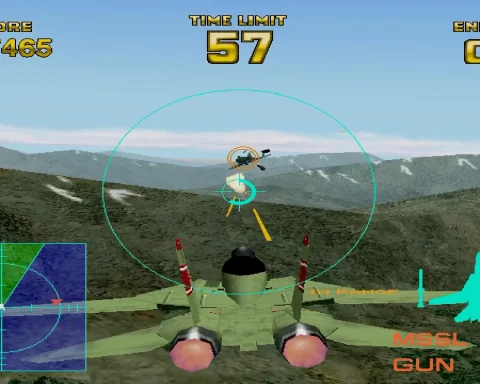Opinion by Matt S.
An article recently published over on PC Gamer argues that the standard price for a blockbuster game should be lowered. In the US, that’s $60. In Australia, it’s $100. The writer of the article argues that games should drop to $50, or an equivalent amount for whatever region in the world you’re from.
I disagree. His article is going to be more popular than mine (and, one suspects, that’s why he wrote it), but the reality is that the games industry struggles mightily from a disconnect between the perceived value that games hold and the actual cost of making them, and then running a sustainable game development business so that you can continue to make games into the future.
Not that the author of the article acknowledges at any point the development costs in making a game, or the sustainability of pricing over the long run. The bulk of his article can be summarised as “cheaper is good for the consumer, and therefore must be good for the developer and publisher.”
Which is not how it works at all.
What is good for the consumer is having a stable, healthy industry in which businesses are able to create products with the reliable expectation that they will make money from them. For businesses to be able to take risks (invest in new IP and a variety of games and ideas), the businesses need to know that, at the end of the process, they’ll not be forced to make teams redundant or close down studios. There are only two feasible ways that a healthy business environment can happen:
1) If a business has a really profitable franchise that it can rely on year-in-year-out (think Assassin’s Creed or Call of Duty), then the profits from those games can be invested in trying to find some other promising ideas; for example, developing Beyond Good & Evil 2, or creating an indie label like Sierra to resurrect the King’s Quest series. This is a good model for big publishers and functions very much the way Hollywood does, where publishers make ten films, knowing one will be a megahit, two more will be profitable, and the other seven will be lucky to break even, or only had tiny commercial appeal in the first place. Those other seven are generally the experimental or highly creative works that allow Hollywood to maintain whatever soul it has after the endless remakes, sequels, and comic book films.Those seven are the reason that the really creative directors, from Tarantino through to Spielberg, ever got a start.
2) If a business is selling products at a high enough margin, it knows that it won’t need to sell large quantities of those products in order to be profitable. Therefore it can invest in niche ideas, knowing that the smaller audiences interested in these products will ensure that it’s a worthwhile venture. This business model is fundamentally what drives Japanese otaku publishers like NISA, Compile Heart, and the wargaming specialists Slitherine.
In both cases, dropping the price of a game is catastrophic to the developer’s and publisher’s health. In scenario 1), reducing the asking price of Assassin’s Creed would mean the big publishers no longer have that big influx of profit coming in, meaning no more Beyond Good & Evil, because suddenly the business model to sustain potential commercial failures isn’t working any more. In scenario 2), reducing the asking price for a niche game means that the small audience simply doesn’t return enough money to make that game worth the investment to localise and publish. Good-bye fanservicey games, visual novels, JRPGs that aren’t Final Fantasy, and so on and so forth.
Here’s the big secret no one in the industry is willing to speak publicly about, because “fans” would cry bloody murder at the mere suggestion that businesses need to make money: game development as it currently stands is not actually operating on a high enough margin to be sustainable. There are a couple of reasons for this:
1) Games go on discount quickly, frequently. Discounting was originally used as a way of getting rid of old inventory in order to make room on the shelves to sell the new product line. It was a technique principally used by fashion (because old clothes don’t have value any longer), and foodstuffs (because food that’s off can’t be sold at all). But in the games industry you have games discounted within weeks of being released. And discounted on digital storefronts, where the discounting is functionally pointless because there’s no inventory management to worry about. Go look on the PlayStation Store right now: The Last Guardian is there, at something like 25 per cent off. It was released less than a month ago.That 25 per cent is in excess of the actual margin of the game. Sony is selling it at a loss.
2) Discounting is steep. From Steam sales to Humble Bundle, it’s not just that games are discounted quickly; consumers also know that if they wait a while, often less than a year, these games will be discounted by an incredible amount and they’ll be able to get them for peanuts. What the industry has allowed to happen (and it only has itself to blame), means that those Day One sales are all the more important; if your game fails to sell into profitability immediately, then you’ll be lucky if you scrape through with the spare change that will filter through to you when you put the game on sale in desperation a couple of months down the track.
The most amusing thing about all this is that “fans” shoot themselves in the foot by waiting for sales or demanding publishers sell games cheaper. The money still has to come in, and how are publishers achieving that? Aggressive DLC and microtransactions, and Day One pre-orders – the publishers are forced to get a return on their investment by carving up the content in a way that upsets so many of the players.
The reality is that in the blockbuster end of town a full-priced game is still not profitable. The Call of Duties and FIFAs of the world are sold almost on a loss-leading basis, in order to then make money from people playing ultimate team or buying map packs. If people didn’t want this practice to continue, they would be arguing to increase the price of games, put margin back into the sale of the base product, and then resist participating in sales for at least a year, at which point a 25% discount would be reasonable, but a 80-90 per cent drop in price to participate in a bundle is not.
None of this is the popular point of view, I know, but this is the economic reality driving the industry. Operating on such low margins as developers and publishers currently do is not healthy and is unsustainable. From iOS games (where free-to-play and $0.99 games really should be $5-$10) right through to the blockbusters (where I would argue a lift of 20-30% would put the margins about where they need to be), gaming needs to be more expensive.
And, while I know people will respond “well, I wouldn’t buy as many games, then”, that may well be the case; but on a macro level the economics of games wouldn’t change that much. Fewer games might be made and sold, but the same amount of money would be returned into the industry, and that, in turn, would mean more profitable developers and publishers, and greater room for creative risk. That is a much better vision for the future of this industry.
– Matt S.
Editor-in-Chief
Find me on Twitter: @digitallydownld







